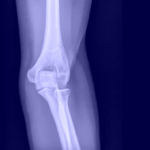Formaldehyde is an organic, volatile compound that is present in gaseous form at room temperature. It is colorless, but has a powerful pungent smell. It is present in varied forms like paraformaldehyde, formalin, etc.
Exposure to formaldehyde via inhalation, ingestion, skin contact, etc. can result in formaldehyde poisoning. Depending on the underlying cause, affected people may suffer from irritation in throat, nose, eyes; skin rash or injury; headaches; burning sensations in esophagus and stomach; respiratory issues like bronchitis, asthma, wheezing, and pneumonia; nausea; chest tightness; coma; and even death.
Children are at greater risk to developing severe complications of formaldehyde poisoning due to their weaker immune system. The gas is a carcinogen and hence regular formaldehyde exposure can increase risk to development of brain and lung cancer.
Sources of formaldehyde
Formaldehyde is made up of hydrogen, carbon, and oxygen. It is naturally present in atmosphere and is commercially made via process of methanol catalytic oxidation. Bacteria and sunlight break down formaldehyde within a small time frame.
Formaldehyde gets produced during forest fires and in small amounts in humans and animals during metabolism. It is present in vegetables and fruits like banana, apple, pear, cauliflower, and mushroom. Bombay ducks, crustaceans, and other seafood release formaldehyde after death which builds up in their body when in cold storage.
Man made instances of formaldehyde are present in industrial emissions, automobile exhaust, cigarette smoking, paints, particleboard, some cosmetics, varnishes, disinfectants, carpet cleaners, fiberboard, plywood, plastics, air fresheners, glues, paper products, shampoos, pharma products, adhesives, hair conditioners, mouthwash, household antiseptics, and garment industries.
Formaldehyde poisoning: Adverse effects
Formaldehyde can gain entry into the human body via ingestion, inhalation, or absorption via skin, the latter two being the most common causes. The severity and nature of formaldehyde poisoning symptoms are dependent on formaldehyde concentration, period of exposure, and sensitivity of patient to the chemical.
- Formaldehyde poisoning which occurs due to ingestion is very rare. It is often accidental. Affected people may experience symptoms like irritation in throat, mouth, and stomach. In some cases, patients may lose consciousness or elicit stomach pain, vomiting, nausea, and bleeding, etc. Extreme gastrointestinal tract damage may occur if formaldehyde concentration is high. Ingesting 20 to 30 ml of any solution with formaldehyde concentration of 37 percent can cause coma and death.
- The symptoms of formaldehyde poisoning caused by inhalation may vary from one individual to another. If 0.1 to 5 ppm formaldehyde is inhaled then symptoms include irritation of skin, nose, eyes, and respiratory passageways; for 5 to 20 ppm, patients may experience cough, breathing issues, and burning of skin and eyes; for 20 to 100 ppm, patients may suffer from severe side effects like chest pain, irregular heartbeat, irritation of lungs, and pulmonary edema. Prolonged exposure to the gas can result in conditions like hypersensitivity pneumonitis and allergic asthma.
- If formaldehyde poisoning directly affects the eyes, then there is risk of severe damage to the cornea which may result in blindness. Exposure of the eyes to vapor or gas may cause burning sensation in eyes, redness, and production of tears. Formaldehyde poisoning of skin may be accompanied by symptoms such as cracks, dry skin, scaling, and itchiness. In case of severe exposure, patients may suffer from burns, redness, pain, scarring, and blistering. There is also increased risk to development of allergic dermatitis or eczema.

Treatment of formaldehyde poisoning
All instances of formaldehyde need to be checked by a doctor.
- In case there is minor contact with formaldehyde solution, then patients need to undress, wash the hair, skin, and eyes for 5 to 10 minutes and then seek medical attention. If the chemical is ingested, then drink lots of water before visiting the doctor.
- There is no antidote for formaldehyde poisoning. Treatment options typically include supplemental administration of oxygen, decontamination, and hemodialysis. Emergency care may be needed in case of severe exposure.
Prevention
The best way to avoid formaldehyde poisoning is reducing contact with the chemical. Presented below are some tips on how to decrease the levels of formaldehyde at home/indoors:
- Smoke from gas stoves and fireplaces are a source of formaldehyde. Ensure that the stoves and fireplaces are well maintained and that the chimneys are regularly cleaned.
- Minimize the use of paints, pressed-wood items, nail polish, varnishes, and other formaldehyde-containing materials
- Do not use tobacco products or smoke cigarettes inside the house
- Use an indoor air purifier to get rid of the chemical
- Ensure that the house is sufficiently ventilated. This is particularly important when carrying out activities like varnishing, painting, wallpaper installation, etc.
- Different kinds of houseplants like azalea, heart leaf philodendron, corn plant, golden pothos, and chrysanthemum have formaldehyde removing properties. Buy and place them at different places in the house to remove the chemical from indoor air.


